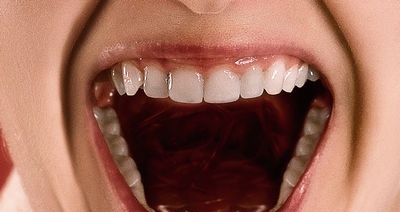|
 Sore throats are different. According to the severity of the disease, the nature and location of the raids on the tonsils, the following common types of tonsillitis are distinguished: catarrhal, follicular, lacunar and phlegmonous. Sore throats are different. According to the severity of the disease, the nature and location of the raids on the tonsils, the following common types of tonsillitis are distinguished: catarrhal, follicular, lacunar and phlegmonous.
Catarrhal sore throat
The disease usually starts suddenly. The patient has a sore throat, a feeling of dryness, the presence of a foreign body, a slight pain when swallowing. The general condition worsens slightly, the temperature rises to 37.5, sometimes to 38 °. Usually there is a headache, feeling of weakness and malaise. When examining the throat, redness and swelling are visible, mainly of the palatine tonsils themselves, but there are no plaques. This is typical for this type of angina. The tongue is coated, dry. The upper-lateral lymph nodes are enlarged, painful. In young children, such phenomena, including a temperature reaction, are usually more pronounced than in adults. The duration of the disease is 3-5 days, after which all the phenomena disappear.
Diffuse inflammation of the mucous membrane of the entire oropharynx is called acute pharyngitis (acute catarrh of the oropharynx from the Greek - "pharynx" - pharynx, pharynx). Pharyngitis does not belong to the group of angina, but to the group of acute (seasonal) catarrh of the upper respiratory tract.
It must be remembered that people with chronic catarrh of the oropharynx, smokers, people who constantly overextend their voice due to occupational conditions, often have reddening of the mucous membrane of the oropharynx, which can lead to an error in the diagnosis.
Follicular tonsillitis
Follicular angina begins in the same way as catarrhal: symptoms of the disease are similar to those described above. However, it is usually more severe. The general condition of the patient is bad, the temperature is usually high (up to 38-40 °), sometimes chills are noted. General weakness, headache, weakness, pulling or pain in the lower back and legs, lack of appetite are significantly expressed. Pain when swallowing is most often significant and even very sharp. The anterolateral lymph nodes are swollen and painful. On the surface of the tonsils, numerous whitish-yellow blisters appear in the form of dots.
With timely and correct treatment, angina symptoms, including raids, disappear by the 5-6th day from the onset of the disease.
Lacunar angina
Lacunar angina is just as difficult: patients complain of headache, malaise and sore throat. The temperature often reaches 40 °. On examination of the pharynx, it can be seen that the palatine tonsils have acquired a bright red color. It is characteristic that whitish-yellow plaques appear at the entrances to the lacunae, often becoming large; sometimes they merge with each other. The disease also lasts up to about 6 days, and all painful phenomena subside gradually. The picture of the pharynx in this particular disease often resembles that in diphtheria and requires special attention.
 It must be remembered that with any of these angina, including the mildest catarrhal, severe complications from the body may occur. With the onset of the disease, you must immediately consult a doctor who will prescribe the correct treatment. It must be remembered that with any of these angina, including the mildest catarrhal, severe complications from the body may occur. With the onset of the disease, you must immediately consult a doctor who will prescribe the correct treatment.
Quinsy
In a number of cases, when the phenomena after one of the transferred sore throats subside or subside and the patient gets the impression that he is almost healthy, violent phenomena arise again. There are sharp pains in the throat, but more often in one direction, the temperature rises again, sometimes up to 40 ° or more. Swallowing becomes very painful, there is profuse salivation. This is because sometimes an abscess forms in the tonsil (phlegmonous sore throat).In other cases, the infection penetrates deep behind the amygdala into the surrounding tissue; this disease is called acute paratonsillitis (from the Greek "steam" - near and the Latin "tonsilla" - tonsil).
By 4-5 days from the onset of a recurrent disease, an abscess is often formed, which either opens independently, or the doctor makes a surgical opening of it. After this, as a rule, there is a significant improvement in the general condition.
Such diseases usually occur in cases when a person suffering from a sore throat, without adhering to the doctor's instructions, prematurely stops taking medications or goes outside, being exposed to hypothermia (general or local), and falls ill again, but with a more severe form. Doctors know that most often such complications of angina occur in people suffering from chronic inflammation of the tonsils (we will talk about this later).
Other types of tonsillitis
Much less often than the angina described above, acute inflammatory processes can develop in other clusters of lymphadenoid or lymphatic tissue: this includes the lingual and nasopharyngeal tonsils. The inflammation can also be diffuse, spreading throughout the lymphadenoid tissue of the nasopharynx, oropharynx and larynx.
Less often independently, more often simultaneously with the defeat of other tonsils occurs lingual sore throat... It is sometimes the result of minor trauma when eating or after some kind of surgery in the nose or oropharynx. The disease is usually severe, with sharp pain when swallowing. The inflammatory process can lead to purulent inflammation of the tongue (glossitis from the Greek "gloss" - tongue), phlegmon of the bottom of the mouth, laryngeal edema. With this form of angina, the respiratory function may be impaired.
More common in children than adults nasopharyngeal angina, which often runs latently, under the guise of an acute cold (rhinitis), (from the Greek "rice" - "rhinos" - nose). With this disease, there is also a sore throat, a feeling of something outside the nose, a feeling of fatigue and a high temperature. When examining the nasopharynx, there is a sharp reddening of the adenoid tissue, sometimes with pinpoint deposits. This disease often gives a complication to the ears.
Lingual and nasopharyngeal sore throats can only be seen by a doctor who has a special technique for examining the nasopharynx and larynx.
Also rare tonsillitis tonsillitisdescribed in detail by Simanovsky - Plaut - Vincent. In this case, only one amygdala is more often affected. On it, and sometimes on the inner sides of the cheeks or other parts of the oropharynx, superficial (or deep) ulcerations appear, covering with a white bloom. The general condition of the patient usually suffers little, the temperature either rises slightly (up to 37.3-37.5 °), or remains normal. Only after examining the smear made from these plaques under a microscope can the diagnosis be finally established. This disease, with proper treatment, goes away within 2 to 3 weeks.
In some cases, with any serious illness, when the body's resistance drops sharply and its defense reaction is sufficiently disturbed, microbes that are constantly in the oral cavity and pharynx are able to penetrate into the thickness of the tonsil. In the pharynx, changes develop, similar to those that occur with angina. But this is not an independent disease, but only a consequence of the general condition of the sick person's body.
In such cases, the difficulty of establishing a diagnosis is aggravated by the fact that sore throats often occur with a blood disorder, and although visible changes in the throat are easily ascertained, all this turns out to be a secondary phenomenon. So, pronounced changes in the tonsils with deep ulceration and even tissue necrosis are, for example, with agranulocytic angina. This disease is expressed in a sharp decrease in the number of leukocytes in the blood in general, and most importantly in the disappearance of granular neutrophils.
 This should also include angina, which develops with a blood disease - alimentary-toxic aleukia... In this case, inflammatory changes in the tonsils usually go through a series of stages - catarrhal, lacunar, ulcerative - and often end in necrosis of the entire tissue of the tonsil. At the heart of this disease is a decrease in the number of leukocytes and the disappearance of platelets, and the latter causes a sharp decrease in blood clotting. Naturally, the main role in the diagnosis of these diseases is played by a general clinical blood test. This should also include angina, which develops with a blood disease - alimentary-toxic aleukia... In this case, inflammatory changes in the tonsils usually go through a series of stages - catarrhal, lacunar, ulcerative - and often end in necrosis of the entire tissue of the tonsil. At the heart of this disease is a decrease in the number of leukocytes and the disappearance of platelets, and the latter causes a sharp decrease in blood clotting. Naturally, the main role in the diagnosis of these diseases is played by a general clinical blood test.
Inflammatory changes in the throat, reminiscent of a sore throat, occur with a number of infectious diseases. These include scarlet fever, diphtheria, measles and whooping cough. Each of these diseases has its own picture.
When scarlet fever the disease begins acutely. After chilling, the temperature rises to 39-40 °; single or repeated vomiting is often observed. Already in the first hours, there is painful swallowing, weakness throughout the body, and headache. Examination of the pharynx reveals a bright reddening of the tonsils, soft palate and uvula.
Later, the tonsils become covered with an off-white or yellow-white coating, which can spread to the soft palate and uvula. The submandibular and upper lateral cervical lymph nodes are enlarged. The tongue is moist, covered with a grayish-white coating. Starting from the 3rd-4th day of illness, it is free from plaque, acquires a bright red color and numerous enlarged papillae are noticeable at its tip. This type of tongue is characteristic of this disease and is often referred to as "crimson" tongue. The patient's face becomes puffy, sometimes on the second or third day of the disease, a characteristic rash appears on the skin in the form of small bright red dots, located so close that they merge into a continuous redness. The rash appears initially on the neck and upper chest and spreads throughout the body after 1-3 days.
In the usual course of scarlet fever, the febrile period lasts 7-12 days. After that, all the phenomena gradually subside and recovery or a period of relative well-being begins until the 15th-20th day of illness, when a second period may occur, characterized by a number of complications. These include: otitis media (inflammation of the middle ear), often purulent, nephritis - inflammation of the kidneys, lymphadenitis - inflammation of the lymph nodes, etc.
It should still be noted that the second period of scarlet fever, especially with modern methods of treatment, when penicillin, anti-streptococcal serum and other drugs are used, is usually not observed or is very rare.
After the disappearance of the rash on the skin, a rather characteristic, albeit late, symptom of scarlet fever appears - lamellar peeling of the skin. But children treated with penicillin do not have peeling.
When diphtheria the throat can only be affected by the tonsils - a localized form - or the process covers the palatine arches, the soft palate and the nasopharyngeal mucosa. This is a common form.
In cases of moderate severity, the disease begins with a moderate increase in temperature (up to 38-38.5 °), a feeling of weakness, lethargy and slight pain when swallowing. After 1.5-2 days, a slight reddening of the throat appears, and on one or both tonsils, insular raids of a dirty brown-gray color are formed. At the same time, the upper-lateral cervical lymph nodes increase. Timely, that is, urgent, immediate administration of anti-diphtheria serum removes the plaques that have appeared after a few days and recovery usually occurs.
The severe (widespread) form begins acutely, with an increase in temperature to 38.5-39 °. The patient's condition deteriorates sharply, becomes severe. Tonsils are significantly reddened, edematous; they have massive plaques that spread to the mucous membrane of the nasopharynx, palatine arches and soft palate.The upper-lateral cervical lymph nodes, as a rule, are enlarged, painful to palpation. Even under conditions of timely and vigorous treatment with anti-diphtheria serum, plaque in the pharynx disappears only on the 7th-9th day of illness.
It should be remembered that the toxins (poisons) secreted by the diphtheria bacillus sometimes severely affect the cardiovascular and nervous systems. Therefore, paresis or paralysis of the muscles of the soft palate may occur, leading to impaired swallowing, nasalness, as well as severe damage to the heart, sometimes pleura (pleurisy), liver, blood vessels, etc. Only timely treatment can prevent the occurrence of such complications.
 Causative agent measles is a special type of filtering virus that gets into the air with mucus particles (for example, when talking or coughing), and even at a great distance (from room to room with a stream of air) can cause infection. Causative agent measles is a special type of filtering virus that gets into the air with mucus particles (for example, when talking or coughing), and even at a great distance (from room to room with a stream of air) can cause infection.
After contact with a patient with measles, a runny nose, inflammation of the mucous membrane of the eyes, dry "barking" cough appears in 10-12 days; the temperature rises rapidly to 38-40 °. Starting from the 2nd-3rd day on the mucous membrane of the cheeks of the patient, you can find whitish areas of the exfoliating surface layer (epithelium). From the 3rd day, pronounced redness of the mucous membrane, including the tonsils, develops in the pharynx. On the 4th day, the temperature rises to 39.5-40.5 °, and from this moment a febrile period of measles, or a period of rash, begins.
A large-spotted rash appears on the face and behind the ears. In the following days, the rash spreads to the trunk and lower limbs. By the 4th day from the onset of the rash, the temperature decreases, the rash disappears from the skin in the same sequence (that is, first from the face, then from the trunk and limbs). In areas where there were rashes, after the disappearance of the rash, pigmentation and small peeling of the skin appear.
In all cases, a patient with measles should be isolated, at least at home, and all children aged 3 months to 4 years who were in contact with him should be injected intramuscularly with measles serum or gamma globulin.
It must be remembered that inflammatory changes in the tonsils, resembling to one degree or another the picture in angina, are also found in diseases such as malignant tumors, tuberculosis, syphilis.
Recently, due to the widespread use of antibiotics (penicillin, streptomycin, etc.), it turned out that some people, due to the purely individual characteristics of the body, do not tolerate certain antibiotics or sulfa drugs (streptocid, sulfazole). Sometimes taking even small doses causes a special, unusual, so-called allergic reaction in them. It is expressed in a deterioration in general condition, an increase in temperature, but more often in irritation from the skin or mucous membranes. Among such allergic phenomena are edema, swelling of the mucous membrane of the oropharynx, sometimes the inner surfaces of the cheeks, etc. This is not a life-threatening phenomenon (if the edema has not spread to the larynx), but subjectively very unpleasant. However, it is usually quickly eliminated after discontinuation of the appropriate medication and the introduction of antiallergic drugs.
The foregoing shows that with any change in the throat, it is necessary to consult a doctor in a timely manner, because early diagnosis and rational treatment contributes to the fastest recovery of the patient and prevents the spread of infection.
Preobrazhensky B.S. - How to protect yourself from angina and its consequences
|
 Sore throats are different. According to the severity of the disease, the nature and location of the raids on the tonsils, the following common types of tonsillitis are distinguished: catarrhal, follicular, lacunar and phlegmonous.
Sore throats are different. According to the severity of the disease, the nature and location of the raids on the tonsils, the following common types of tonsillitis are distinguished: catarrhal, follicular, lacunar and phlegmonous. It must be remembered that with any of these angina, including the mildest catarrhal, severe complications from the body may occur. With the onset of the disease, you must immediately consult a doctor who will prescribe the correct treatment.
It must be remembered that with any of these angina, including the mildest catarrhal, severe complications from the body may occur. With the onset of the disease, you must immediately consult a doctor who will prescribe the correct treatment. This should also include angina, which develops with a blood disease - alimentary-toxic aleukia... In this case, inflammatory changes in the tonsils usually go through a series of stages - catarrhal, lacunar, ulcerative - and often end in necrosis of the entire tissue of the tonsil. At the heart of this disease is a decrease in the number of leukocytes and the disappearance of platelets, and the latter causes a sharp decrease in blood clotting. Naturally, the main role in the diagnosis of these diseases is played by a general clinical blood test.
This should also include angina, which develops with a blood disease - alimentary-toxic aleukia... In this case, inflammatory changes in the tonsils usually go through a series of stages - catarrhal, lacunar, ulcerative - and often end in necrosis of the entire tissue of the tonsil. At the heart of this disease is a decrease in the number of leukocytes and the disappearance of platelets, and the latter causes a sharp decrease in blood clotting. Naturally, the main role in the diagnosis of these diseases is played by a general clinical blood test. Causative agent measles is a special type of filtering virus that gets into the air with mucus particles (for example, when talking or coughing), and even at a great distance (from room to room with a stream of air) can cause infection.
Causative agent measles is a special type of filtering virus that gets into the air with mucus particles (for example, when talking or coughing), and even at a great distance (from room to room with a stream of air) can cause infection.









